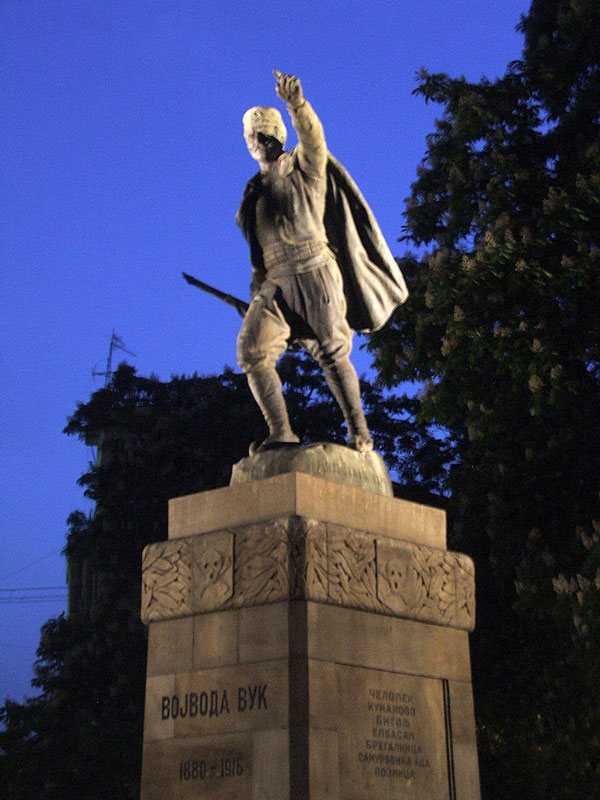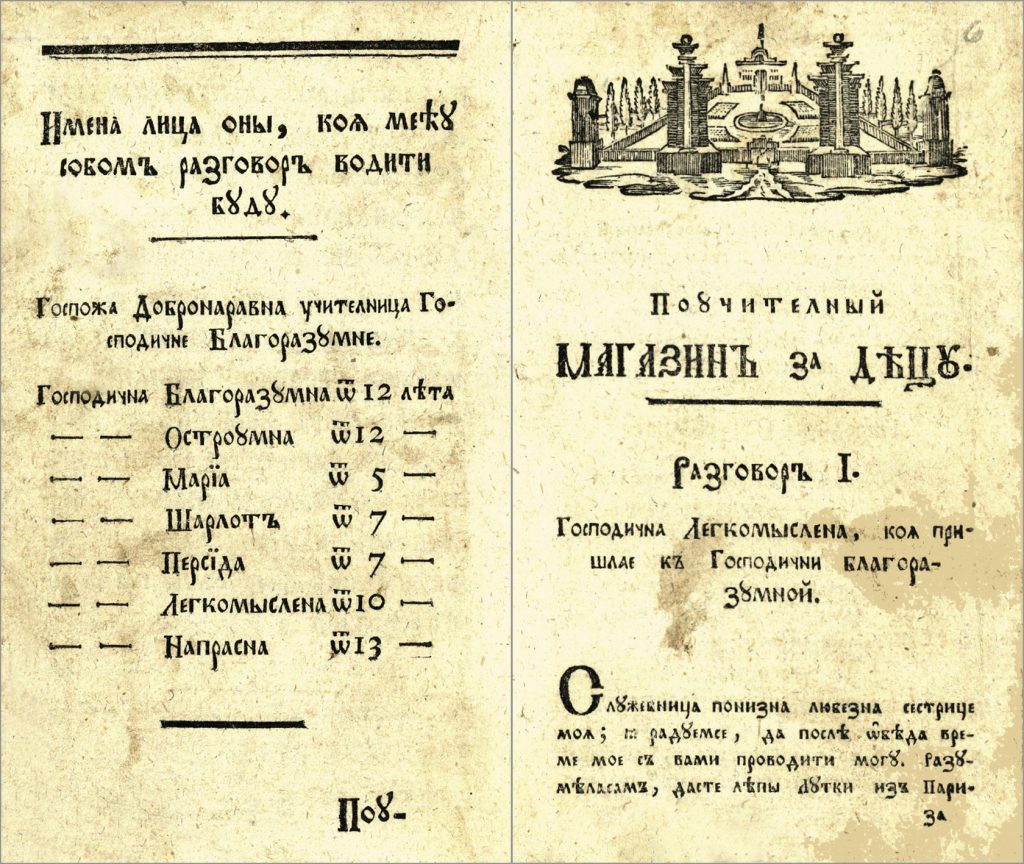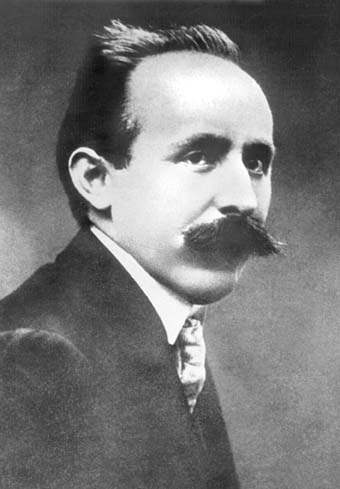|
Chetniks In Occupied Serbia (1916–1918)
Chetniks in World War I were irregular auxiliary units of the Royal Serbian Army, active between 1914 and 1918, and tasked with special operations against invading Austro-Hungarian, Bulgarian, and German forces. Although their origins lay in earlier nationalist resistance movements and their formal use during the Balkan Wars (1912–1913), the Serbian Army established four official Chetnik detachments in August 1914. Initially deployed to defend Serbia's borders, these units soon shifted to guerrilla operations behind enemy lines, engaging in sabotage, ambushes, and diversionary attacks. Following the occupation of Serbia in late 1915, surviving Chetniks reorganised into underground resistance groups, forming new detachments that continued to operate in the occupied territories. They played a significant role in the Toplica uprising (1917) and contributed to the final liberation of Serbia and Montenegro in 1918. After the war, most Chetnik detachments were demobilised or abs ... [...More Info...] [...Related Items...] OR: [Wikipedia] [Google] [Baidu] |
Guerrilla Warfare
Guerrilla warfare is a form of unconventional warfare in which small groups of irregular military, such as rebels, partisans, paramilitary personnel or armed civilians, which may include recruited children, use ambushes, sabotage, terrorism, raids, petty warfare or hit-and-run tactics in a rebellion, in a violent conflict, in a war or in a civil war to fight against regular military, police or rival insurgent forces. Although the term "guerrilla warfare" was coined in the context of the Peninsular War in the 19th century, the tactical methods of guerrilla warfare have long been in use. In the 6th century BC, Sun Tzu proposed the use of guerrilla-style tactics in '' The Art of War''. The 3rd century BC Roman general Quintus Fabius Maximus Verrucosus is also credited with inventing many of the tactics of guerrilla warfare through what is today called the Fabian strategy, and in China Peng Yue is also often regarded as the inventor of guerrilla warfare. Guerrilla wa ... [...More Info...] [...Related Items...] OR: [Wikipedia] [Google] [Baidu] |
Royal Yugoslav Army
The Yugoslav Army ( sh-Latn-Cyrl, Jugoslovenska vojska, JV, Југословенска војска, ЈВ), commonly the Royal Yugoslav Army, was the principal Army, ground force of the Kingdom of Yugoslavia. It existed from the establishment of Yugoslavia in December 1918 until its surrender to the Axis powers on 17 April 1941. Aside from fighting along the First Austrian Republic, Austrian border in 1919 and 1920 related to territorial disputes, and some border skirmishes on its southern borders in the 1920s, the JV was not involved in fighting until April 1941 when it was quickly overcome by the Nazi Germany, German-led invasion of Yugoslavia. Shortly before the invasion, Serbian officers of the Yugoslav General Staff, encouraged by British Special Operations Executive personnel in Belgrade, led Yugoslav coup d'état, a coup d'état against Prince Paul of Yugoslavia and Dragiša Cvetković for Yugoslav accession to the Tripartite Pact, adhering to the Tripartite Pact. Beyo ... [...More Info...] [...Related Items...] OR: [Wikipedia] [Google] [Baidu] |
Vojin Popović
Vojin Popović, known as Vojvoda Vuk (; 9 December 1881 – 29 November 1916) was a Serbian ''voivode'' (military commander), who fought for the Macedonian Serb Chetniks (i.e. Komitadji, komiti) in the Struggle for Macedonia, and then the Serbian national army in the Balkan Wars and World War I. Life Vojin was born on 9 December 1881 at Sjenica, Kosovo Vilayet, Ottoman Empire (present-day southwestern Serbia). Shortly after his birth, the family moved to Kragujevac, where Vojin attended school. He chose a career in the military. On 3 November 1901, he became ''second lieutenant''. He was among the first ''cheta'' (bands, 'čete') heading for ''Old Serbia'', i.e. Macedonia (region), Makedonia (1905). He was killed after being shot through the heart on top of the Staravinski vis near Gruništa, Novaci Municipality in skirmishes after the Battle of Kaymakchalan on 29 November 1916 during the height of World War I. There is a Monument to Vojvoda Vuk in Belgrade. Legacy * There i ... [...More Info...] [...Related Items...] OR: [Wikipedia] [Google] [Baidu] |
Radomir Putnik
Radomir Putnik (; ; 24 January 1847 – 17 May 1917) was a Serbian military leader and the first Field marshal (Serbia and Yugoslavia), Field Marshal of Serbia. Serving as Chief of the General Staff (Serbia), Chief of the General Staff, he played a pivotal role in the Balkan Wars and in the First World War, commanding Serbian forces in some of their most significant victories. His career, spanning every major conflict involving Serbia from 1876 to 1917, left a lasting impact on Serbian military strategy and national identity. Biography Family background and early career Radomir Putnik was born on 12 January 1847 in Kragujevac, Principality of Serbia. His family originated in Autonomous Province of Kosovo and Metohija, Kosovo but fled to the Habsburg monarchy during the Great Serb Migration of 1690. After generations in exile, the family returned to the Principality of Serbia, which became the first modern Serbian polity to achieve independence from Ottoman Empire, Ottoman ru ... [...More Info...] [...Related Items...] OR: [Wikipedia] [Google] [Baidu] |
Black Hand (Serbia)
Unification or Death ( sr-Cyrl-Latn, Уједињење или смрт, Ujedinjenje ili smrt, separator=" / "), popularly known as the Black Hand ( sr-Cyrl-Latn, Црна рука, Crna ruka, separator=" / ", link=no), was a secret military society formed in May 1911 by officers in the Army of the Kingdom of Serbia. It gained a reputation for its alleged involvement in the assassination of Archduke Franz Ferdinand in Sarajevo in 1914 and for the earlier assassination of the Serbian royal couple in 1903, under the aegis of Captain Dragutin Dimitrijević ( "Apis"). The society formed to unite all of the territories with a South Slavic majority that were not then ruled by either Serbia or Montenegro. It took inspiration primarily from the unification of Italy in 1859–1870, but also from the unification of Germany in 1871. Through its connections to the June 1914 assassination of Archduke Franz Ferdinand in Sarajevo, carried out by the members of the youth movement Young Bo ... [...More Info...] [...Related Items...] OR: [Wikipedia] [Google] [Baidu] |
Ministry Of Defence (Serbia)
The Ministry of Defence of Serbia, Republic of Serbia () is the Ministry (government department), ministry in the Government of Serbia which is in the charge of defending the Republic of Serbia from internal and external military threats. The current minister is Bratislav Gašić, in office since 2 May 2024. The headquarters of the ministry are located at the Yugoslav Ministry of Defence Building, tower of the "Building B" of the Yugoslav Ministry of Defence Building and at the Old General Staff Building, Belgrade, Old General Staff Building. Organization This is the organisation within the Ministry of Defence: *Minister of Defence **Cabinet of Minister ***Section for protocol **State secretaries ***Department for emergency situations ***Department for budget and finances **Department for public relations **Serbian General Staff, General Staff **Defence Policy Sector ***Department for organization ***Department for strategic planning ***Department for international military coo ... [...More Info...] [...Related Items...] OR: [Wikipedia] [Google] [Baidu] |
Ohrid–Debar Uprising
The Ohrid–Debar uprising (; ; ) was an uprising by the population in Western Macedonia, then Kingdom of Serbia, in September 1913. It was organized by the Internal Macedonian Revolutionary Organization (IMRO) and Albania against the Serbian capture of the regions of Ohrid, Debar and Struga after the Balkan Wars (1912–13). Background The IMRO had discussions with the Albanian revolutionary committee of Sefedin Pustina at Elbasan, Albania, between 12 and 17 August 1913. It was agreed that an uprising would be started against Serbia. A directive dated 21 August planned for a new fighting against Serbia and Greece in Vardar Macedonia and Greek Macedonia. The IMRO leadership decided for a rebellion in Bitola, Ohrid and Debar, and rallied Petar Chaulev, Pavel Hristov, Milan Matov, Hristo Atanasov, Nestor Georgiev, Anton Shibakov, Ismail Strazimiri and others in those regions. Events The rebellion started only two months after the end of the Second Balkan War. The insurgenc ... [...More Info...] [...Related Items...] OR: [Wikipedia] [Google] [Baidu] |
Second Balkan War
The Second Balkan War was a conflict that broke out when Kingdom of Bulgaria, Bulgaria, dissatisfied with its share of the spoils of the First Balkan War, attacked its former allies, Kingdom of Serbia, Serbia and Kingdom of Greece, Greece, on 16 (Old Style, O.S.) / 29 (N.S.) June 1913. Serbian and Greek armies repulsed the Bulgarian offensive and counterattacked, entering Bulgaria. With Bulgaria also having previously engaged in territorial disputes with Kingdom of Romania, Romania and the bulk of Bulgarian forces engaged in the south, the prospect of an easy victory incited Romanian intervention against Bulgaria. The Ottoman Empire also took advantage of the situation to regain some lost territories from the previous war. When Romanian troops approached the capital Sofia, Bulgaria asked for an armistice, resulting in the Treaty of Bucharest (1913), Treaty of Bucharest, in which Bulgaria had to cede portions of its First Balkan War gains to Serbia, Greece and Romania. In the Trea ... [...More Info...] [...Related Items...] OR: [Wikipedia] [Google] [Baidu] |
Vanguard
The vanguard (sometimes abbreviated to van and also called the advance guard) is the leading part of an advancing military formation. It has a number of functions, including seeking out the enemy and securing ground in advance of the main force. In naval warfare the van is the advance ship, or fleet, that will make the initial engagement with an enemy Naval fleet, fleet. History The vanguard derives from the traditional division of a medieval army into three Battle (formation), battles or ''wards''; the Van, the Main (or Middle), and the Rearguard, Rear. The term originated from the medieval French ''avant-garde'', i.e. "the advance guard". The vanguard would lead the line of march and would deploy first on the field of battle, either in front of the other wards or to the right if they deployed in Line (formation), line. The makeup of the vanguard of a 15th century Duchy of Burgundy, Burgundian army is a typical example. This consisted of: *A contingent of Light cavalry, forer ... [...More Info...] [...Related Items...] OR: [Wikipedia] [Google] [Baidu] |
Vuk Karadžić
Vuk Stefanović Karadžić ( sr-Cyrl, Вук Стефановић Караџић, ; 6 November 1787 (26 October OS)7 February 1864) was a Serbian philologist, anthropologist and linguist. He was one of the most important reformers of the modern Serbian language. For his collection and preservation of Serbian folktales, ''Encyclopædia Britannica'' labelled Karadžić "the father of Serbian folk-literature scholarship." He was also the author of the first Serbian dictionary in the new reformed language. In addition, he translated the New Testament into the reformed form of the Serbian spelling and language. He was well known abroad and familiar to Jacob Grimm, Johann Wolfgang von Goethe and historian Leopold von Ranke. Karadžić was the primary source for Ranke's ''Die serbische Revolution'' (" The Serbian Revolution"), written in 1829. Biography Early life Karadžić was born to Serbian parents Stefan and Jegda (née ''Zrnić'') in the village of Tršić, near Loznica, ... [...More Info...] [...Related Items...] OR: [Wikipedia] [Google] [Baidu] |
Austro-Hungarian Rule In Bosnia And Herzegovina
Bosnia and Herzegovina fell under Austria-Hungary, Austro-Hungarian rule in 1878, when the Congress of Berlin approved the occupation of the Bosnia Vilayet, which officially remained part of the Ottoman Empire. Three decades later, in 1908, Austria-Hungary provoked the Bosnian Crisis by formally annexing the occupied zone, establishing the Condominium of Bosnia and Herzegovina under the joint control of Cisleithania, Austria and Transleithania, Hungary. History Occupation Following the Russo-Turkish War (1877–1878), in June and July 1878 the Congress of Berlin was organized by the Great Powers. The resulting Treaty of Berlin (1878), Treaty of Berlin caused Bosnia and Herzegovina to nominally remain under sovereignty of the Ottoman Empire, but was de facto ceded to Austria-Hungary, which also obtained the right to garrison the Sanjak of Novi Pazar. According to article 25: The provinces of Bosnia and Herzegovina shall be occupied and administered by Austria-Hungary. The g ... [...More Info...] [...Related Items...] OR: [Wikipedia] [Google] [Baidu] |
Macedonia (region)
Macedonia ( ) is a geographical and historical region of the Balkan Peninsula in Southeast Europe. Its boundaries have changed considerably over time; however, it came to be defined as the modern geographical region by the mid-19th century. Today the region is considered to include parts of six Balkan countries: all of North Macedonia, large parts of Greece and Bulgaria, and smaller parts of Albania, Serbia, and Kosovo. It covers approximately and has a population of around five million. Macedonia (Greece), Greek Macedonia comprises about half of Macedonia's area and population. Its oldest known settlements date back approximately to 7,000 BC. From the middle of the 4th century BC, the Kingdom of Macedon became the dominant power on the Balkan Peninsula; since then Macedonia has had a diverse history. Etymology Both proper nouns ''Makedṓn'' and ''Makednós'' are morphologically derived from the Ancient Greek adjective ''makednós'' meaning "tall, slim", and are related t ... [...More Info...] [...Related Items...] OR: [Wikipedia] [Google] [Baidu] |







